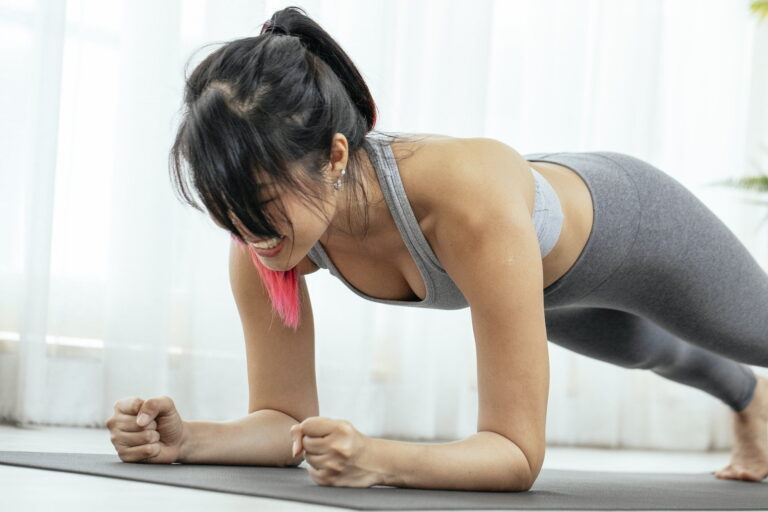Are you tired of the same old wall sit routine? Do you want to challenge yourself and take your workout to the next level? If so, it’s time to get creative with wall sit equipment variations! In this article, we will explore different ways to amp up your wall sit workout and make it more challenging and exciting. So, let’s jump right in and discover new ways to engage your muscles and push your limits!
1. Weighted Wall Sits
If you’ve mastered the traditional wall sit, it’s time to add some weight to the equation. By using dumbbells, a weighted vest, or even a barbell, you can increase the resistance and intensify your workout. This will not only target your quadriceps but also engage your core and upper body muscles. Start with a lighter weight and gradually increase as you progress.
2. Bosu Ball Wall Sits
Take your wall sit to the next level by incorporating a Bosu ball. Placing the rounded side of the ball against the wall, position yourself into a wall sit. The unstable surface of the Bosu ball will require more balance and stability, engaging additional muscles such as your glutes and calves. This variation adds a fun and challenging twist to your workout.
3. Stability Ball Wall Sits
Similar to the Bosu ball variation, using a stability ball can amp up the intensity of your wall sit. Instead of leaning against the wall, position the stability ball between your lower back and the wall. This will force your core muscles to work harder to maintain stability. Additionally, it will engage your hamstrings and lower back muscles, providing a full-body workout.
4. Resistance Band Wall Sits
Resistance bands are a versatile and affordable piece of equipment that can be used to enhance your wall sit routine. Attach the band around your thighs, just above your knees, and assume the wall sit position. The resistance provided by the band will target your outer thighs and glutes, making your workout more challenging and effective.
5. Wall Sit with Medicine Ball
Adding a medicine ball to your wall sit routine will work your muscles in a different way. Hold the medicine ball in front of your chest while performing the wall sit. This will engage your upper body and core muscles, making it a full-body exercise. The weight of the medicine ball will add resistance, intensifying the workout and helping you build strength.
6. Single Leg Wall Sits
If you’re looking to target your quadriceps and improve balance, try doing single-leg wall sits. Start by leaning against the wall with one leg bent at a 90-degree angle, while the other leg is extended in front of you. Hold this position for as long as you can and then switch legs. This variation will challenge your stability and increase the workload on your supporting leg.
7. Wall Sits with Calf Raises
Add an extra burn to your wall sit by incorporating calf raises. While in the wall sit position, push through your heels and lift your body up onto your toes. Lower back down and repeat. This combination of exercises will engage your quadriceps, hamstrings, and calves, giving you a well-rounded lower body workout.
Conclusion
Don’t let your wall sit routine become monotonous and boring. Incorporating these equipment variations will not only make your workouts more challenging but also help target different muscle groups. Whether you choose to add weights, use stability balls or resistance bands, each variation will provide a unique challenge and help you achieve your fitness goals.
FAQs
1. How long should I hold a wall sit?
The duration of a wall sit depends on your fitness level and goals. Start with holding the position for 30 seconds and gradually increase the time as you get stronger. Aim for at least 1 minute to effectively challenge your muscles.
2. Can wall sits help with toning my legs?
Yes, wall sits are excellent for toning and strengthening your leg muscles, particularly the quadriceps. By adding variations and equipment, you can target different muscle groups and achieve a more comprehensive leg workout.
3. How often should I incorporate wall sits into my workout routine?
Like any exercise, the frequency of wall sits will depend on your overall workout plan and goals. Aim to include wall sits at least 2-3 times a week, along with other leg exercises, to see optimal results.
4. Are wall sits suitable for beginners?
Wall sits can be modified to suit different fitness levels, making them suitable for both beginners and advanced individuals. Start with a shallow squat position and gradually progress to a deeper wall sit as your strength improves.
5. Can I do wall sits if I have knee problems?
If you have knee problems, it’s essential to consult with a healthcare professional before attempting wall sits or any other lower body exercises. They can provide guidance on modifications or alternative exercises that will be safe for your condition.



